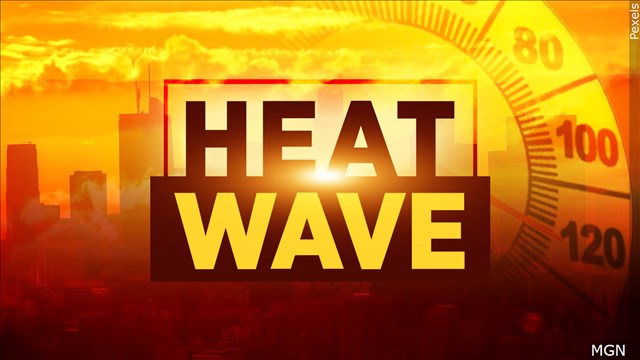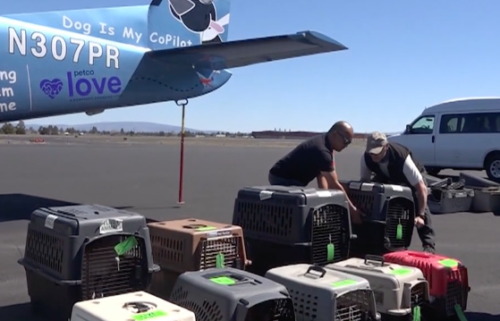Oregon just adopted the most protective heat rules for workers in US, advocates say

Expands access to shade, cool water, mandates cool-down breaks
SALEM, Ore. (AP) — Oregon has adopted an emergency rule that strengthens requirements for employers to protect workers from extreme heat in what advocates call the nation’s most protective heat rule, following deadly record-high temperatures in the Pacific Northwest.
The rule adopted Thursday expands access to shade and cool water and mandates regular cool-down breaks and communication between employees and supervisors so workers can report concerns.
“With these new rules, Oregon has a chance to lead the country in ensuring workplaces are safe from high heat, especially for those doing the most demanding and dangerous jobs, like farming and construction,” said Kate Suisman, an attorney with the Northwest Workers’ Justice Project.
Among the more than 100 people in Oregon who died during the extreme heat wave in late June was an immigrant from Guatemala who was working outside. He had been working with a crew at a nursery that was moving irrigation lines.
“Oregon OSHA is taking an important step forward in leading the nation on standards for outdoors workers,” said Reyna Lopez, executive director of the Oregon farmworkers’ union, known by its Spanish acronym as PCUN. “It’s crucial that we continue to take steps toward long-term policy shifts in our state, that take climate change, and workers safety seriously.”
Oregon OSHA said the temporary rule is effective immediately and stays in place for 180 days.
Oregon OSHA news release:
Oregon OSHA adopts emergency rule bolstering protections for workers against the hazards of high and extreme heat
Oregon Dept. of Consumer & Business Services - 07/08/21 12:07 PM
(Salem) – Oregon OSHA today adopted an emergency rule that strengthens requirements for employers to protect workers from the dangers of high and extreme heat. The requirements expand access to shade and cool water. They also include regular cool-down breaks, training, communication, emergency planning and other measures.
The temporary rule is effective immediately and stays in place for 180 days, as Oregon OSHA continues its work on a permanent heat stress prevention rule with an eye on adopting it this fall. The temporary rule was adopted following direction from Oregon Gov. Kate Brown to enact emergency measures.
The temporary rule applies to any workplace – outdoors and indoors – where heat dangers are caused by the weather.
Andrew Stolfi, director of the Oregon Department of Consumer and Business Services, which includes Oregon OSHA, said the division’s emergency measures and ongoing work on a permanent rule underscore the fact that the risks of working in high heat are not going away this, or any, summer. “In the face of an unprecedented heat wave in the Pacific Northwest – and tragic consequences – it is absolutely critical that we continue to build up our defenses against the effects of climate change, including extreme heat events,” he said.
“This rule creates greater clarity for employers about the specific steps that need to be taken to protect workers from heat stress dangers at work,” said Michael Wood, administrator for Oregon OSHA “For employees, it further crystalizes their existing rights to protection from heat hazards where they work.”
Oregon OSHA encourages a careful reading of the entire rule, which reflects the best available science, and input from labor and employer stakeholders. The division offers free resources for understanding and implementing the rule. The rule incorporates the heat index, which is what the temperature feels like to the human body when relative humidity is combined with the air temperature. The following is a summary of the rule’s provisions.
When the heat index is equal to or above 80 degrees Fahrenheit employers are required to provide:
- Access to sufficient shade (specifics below)
- An adequate supply of drinking water (specifics below)
When the heat index rises above 90 degrees Fahrenheit, all of the rules for 80 degrees apply and, in addition, employers must:
- Ensure effective communication between an employee and a supervisor is maintained so that an employee can report concerns.
- Ensure that employees are observed for alertness and signs and symptoms of heat illness and monitored to determine whether medical attention is necessary.
- Provide a cool-down rest period in the shade of 10 minutes for every two hours of work. These preventative cool-down rest periods may be provided concurrently with any other meal or rest period required by policy, rule, or law.
- Develop and implement an emergency medical plan and practices to gradually adapt employees to working in the heat.
Access to shade
To be sufficient, shade must:
- Be provided by any natural or artificial means that does not expose employees to unsafe or unhealthy conditions and that does not deter or discourage access or use.
- Either be open to the air or provide mechanical ventilation for cooling.
- At least accommodate the number of employees on recovery or rest periods, so that they can sit in in the shade.
- Be located as close as practical to the areas where employees are working.
- Shade present during meal periods must be large enough to accommodate the number of employees on the meal period that remain onsite.
Drinking water
To qualify as an adequate supply of drinking water, it must:
- Be readily accessible to employees at all times and at no cost.
- Enable each employee to consume 32 ounces per hour.
- Be cool (66-77 degrees Fahrenheit) or cold (35-65 degrees Fahrenheit).
- Drinking water packaged as a consumer product and electrolyte-replenishing drinks that do not contain caffeine (for example, sports drinks) are acceptable substitutes, but should not completely replace the required water.
- Employers must also ensure that employees have ample opportunity to drink water.
Supervisor and employee training
No later than Aug 1, 2021, employers must ensure that all employees, including new employees, supervisory, and non-supervisory employees, are trained in the following topics, in a language readily understood, before they begin work in a heat index equal to or in excess of 80 degrees Fahrenheit:
- The environmental and personal risk factors for heat illness, as well as the added burden of heat load on the body caused by exertion, clothing, and personal protective equipment.
- The procedures for complying with the requirements of this standard, including the employer's responsibility to provide water, provide daily heat index information, shade, cool-down rests, and access to first aid as well as the employees' right to exercise their rights under this standard without fear of retaliation.
- The concept, importance, and methods of adapting to working in a hot environment.
- The importance of employees immediately reporting symptoms or signs of heat illness in themselves, or in co-workers.
- The effects of non-job factors (medications, alcohol, obesity, etc.) on tolerance to workplace heat stress.
- The different types of heat-related illness, and the common signs and symptoms of heat-related illness.
The emergency rule documents are available on Oregon OSHA’s Adopted Rules page: Oregon Occupational Safety and Health : Adopted Rules : Rulemaking : State of Oregon
Temporary Rules to Address Employee Exposure to High Ambient Temperatures: Temporary Rules to Address Employee Exposure to High Ambient Temperatures (oregon.gov)
Text of adopted rules: Text of Temporary Rules to Address Employee Exposure to High Ambient Temperatures (oregon.gov)
Workers have a right to a safe and healthy workplace, including the right to be safe from the dangers of heat stress. They have the right to raise health and safety concerns, free from retaliation. If they do not believe their concerns are being addressed, they have a right to file a complaint with Oregon OSHA. The division does not give advance notice of inspections.
Meanwhile, the following free resources are available to help protect workers from high and extreme heat:
- Oregon OSHA’s consultation services offers free assistance with health and safety programs. No fault, no citations, and no penalties are involved.
- The division’s technical experts can help you understand health and safety requirements.
- The federal OSHA heat stress app is useful for planning outdoor work activities based on how hot it feels during the day.
- Oregon OSHA provides heat stress prevention videos in English and Spanish.
- The division’s A-to-Z topic page about heat stress includes quick guides, fact sheets, and posters in English and Spanish.
###
Oregon OSHA, a division of the Department of Consumer and Business Services, enforces the state's workplace safety and health rules and works to improve workplace safety and health for all Oregon workers. For more information, go to osha.oregon.gov.
The Department of Consumer and Business Services is Oregon's largest business regulatory and consumer protection agency. For more information, go to www.oregon.gov/dcbs/.



